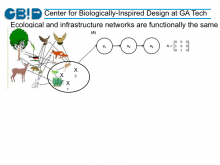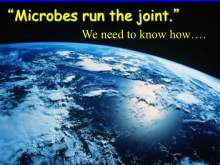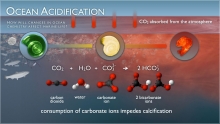- You are here:
- GT Home
- Sciences
- Home
- List of Available Research Projects
The urbanization of the coast is generating significant environmental issues, including increasing nutrient runoff that promotes eutrophication and hypoxic conditions in estuaries. At the same time, the excessive input of nutrients is also responsible for an increase acidification of coastal waters, as denitrification in sediments typically generates acidity.
The urbanization of the coast is generating significant environmental issues, including increasing nutrient runoff that promotes eutrophication and hypoxic conditions in estuaries. At the same time, the excessive input of nutrients is also responsible for an increase acidification of coastal waters, as denitrification in sediments typically generates acidity.
Creating sustainable and resilient cities depends on understanding the properties of food, energy, water and other infrastructure networks. Ecological network analysis ENA is a tool that can be used to understand the connections between network structure, material and energy flow, and resilience. ENA is increasingly applied to both understand and design more sustainable and resilient human infrastructure.
Seaweeds create toxic compounds to deter consumers (fish) and poison competitors (corals). However specific fishes resist these toxins, and some corals also are resistant to their effects. These tolerances may be due to unusual microbes in the gut microbiomes of fishes and in coral mucus coverings. GT has an unusual mixture of marine ecologists, chemists and microbiologists to address these issues.
Seaweeds create toxic compounds to deter consumers (fish) and poison competitors (corals). However specific fishes resist these toxins, and some corals also are resistant to their effects. These tolerances may be due to unusual microbes in the gut microbiomes of fishes and in coral mucus coverings. GT has an unusual mixture of marine ecologists, chemists and microbiologists to address these issues.
Seaweeds create toxic compounds to deter consumers (fish) and poison competitors (corals). However specific fishes resist these toxins, and some corals also are resistant to their effects. These tolerances may be due to unusual microbes in the gut microbiomes of fishes and in coral mucus coverings. GT has an unusual mixture of marine ecologists, chemists and microbiologists to address these issues.
This study seeks to develop a location independent scalable framework for Community based Sustainable Coastal Area Resilience Planning (C-SCARP).
The data-driven framework is adaptable to other locations and/or scales in the future. The proposed C-SCARP framework will make use of an adapted and expanded version of the GoldSET suite of decision support tools that incorporates multi-criteria analysis in a sustainability evaluation framework. Three distinct uses of GoldSET are anticipated:
In coastal areas, data are very sparsely available for flow and wave conditions during storm events due, in part, to the logistical challenge of deploying instruments in such conditions. The questions proposed are centered around the strength and consequences of the flow conditions during storm events and the influence of vegetation on mitigating the effects.
CO2 emission will continue exaggerating, as fossil fuels will most likely remain the major source of energy in next couple decades. The increased carbon in the atmosphere moves into marine ecosystems, making the world’s oceans more acidic. The rate of ocean acidification (OA) today is faster than any time in the past 300 million years.
CO2 emission will continue exaggerating, as fossil fuels will most likely remain the major source of energy in next couple decades. The increased carbon in the atmosphere moves into marine ecosystems, making the world’s oceans more acidic. The rate of ocean acidification (OA) today is faster than any time in the past 300 million years.







